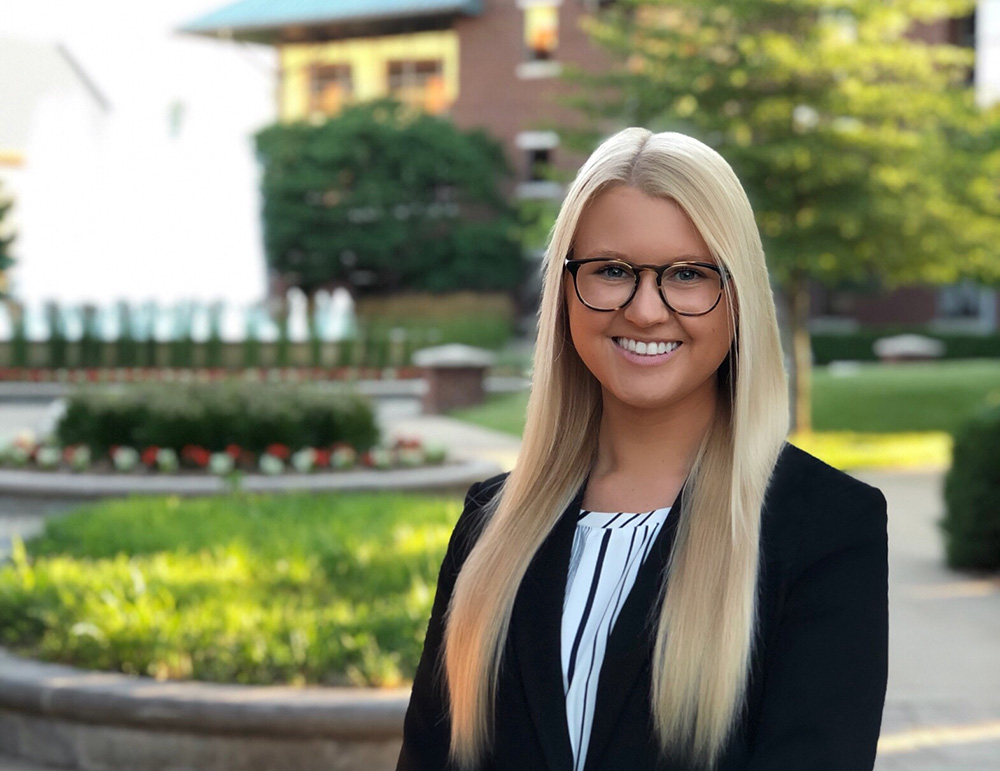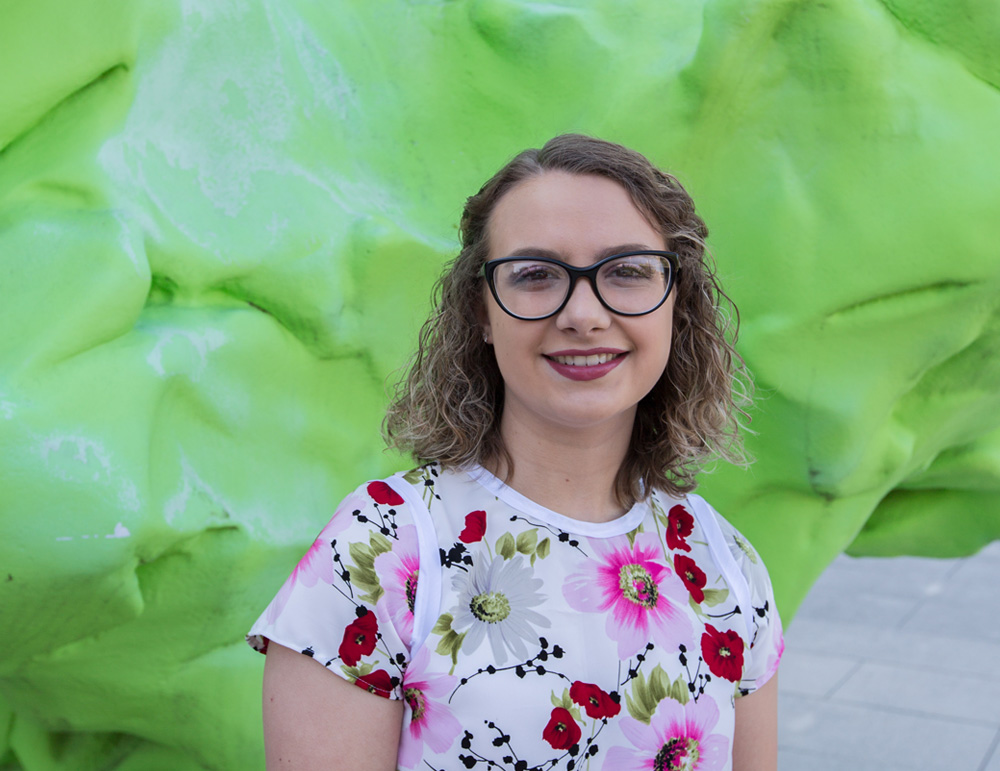Two of the most basic motivations that drive scientific research—exploration of the unknown and the desire to solve a pressing problem—are represented by this year’s Carl R. Woese undergraduate research scholars. Allison Narlock will spend her summer investigating the mechanics of archaeal cell division; Monika Ziogaite will be working to identify genetic variants that contribute to the metastatic potential of breast cancers.
Both Narlock, a rising sophomore majoring in molecular and cellular biology, and Ziogaite, a rising senior majoring in interdisciplinary health sciences, were awarded support for 10 weeks of independent research at the IGB. This is the first summer research experience at Illinois for each of them, and both bring passion and curiosity to their work.
“I had always found cancer to be this incredibly frightful entity. Its ability to take over and multiply with such ease were attributes that I thought were rather daunting,” said Ziogaite, who works in the laboratory of Assistant Professor of Nutrition Zeynep Madak-Erdogan (ONC-PM). “Growing up and experiencing this powerful impact on my own family, I ultimately knew that in order to reduce my fear of cancer and all that it entails, I had to better understand it.”

Since the ground-breaking discovery of a link between predisposition to breast cancer and specific variants of the human gene BRCA1, the identification of additional genetic variants associated with breast cancer and other cancers has improved early detection, diagnosis and treatment.
There are many diverse genes that are involved in the metastasis of breast cancer such as the BRCA1 and BRCA2 genes,” Ziogaite said. “Over the summer, I hope to identify other potential genes that may be associated with an increase in metastatic potential, specifically in breast cancer cells that metastasize and respond to the female hormone estrogen.”
Ziogaite intends to pursue a career in medicine after completing her undergraduate degree, and sees research as an important part of her pre-medical education.
“I have learned that medicine is continually evolving and it is through research such as this that it is able to do so,” she said. “Through this research experience, I hope to not only build upon my hands-on exposure but to further develop into the future medical practitioner that I aspire to become.”
Narlock, who became involved in research while still in high school, also sees her experience as a Woese Undergraduate Scholar as an opportunity to explore aspects of a future career in science.

“My career dream is to be a professor at a university to both teach and pursue research and I hope this summer gives me the opportunity to experience what a career in research would be like,” she said. “I am hoping this summer experience helps me decide where I might want to focus on.”
Narlock joined the laboratory of Professor of Microbiology Rachel Whitaker (IGOH leader/BCXT) after a description of the lab’s work on microbial ecology piqued her interest. She has spent the spring learning to use imaging techniques that will help her examine a mechanism of cell division in the archaeon Sulfolobus islandicus.
The cells of S. islandicus and related archaeal species are protected by a protein layer called the S-layer. When one of the genes encoding a component protein of this enveloping material is mutated, the cells appear enlarged and clump together, suggesting that something has gone awry with the cell division process.
“Are the cells fusing together to form larger ones or are the cells growing and simply not dividing?” Narlock said. “The question cannot be answered over 10 weeks, but by being able to accurately stain and image the DNA and the membrane, I will take a step towards answering if the cell size has any relation to the amount and or location of the DNA within the cell, or even if these cells have DNA at all.”
Narlock is thrilled to be contributing to research addressing such a fundamental biological question.
“I chose to transfer to UIUC for the research opportunities and this is definitely the experience I was hoping to get,” she said.
